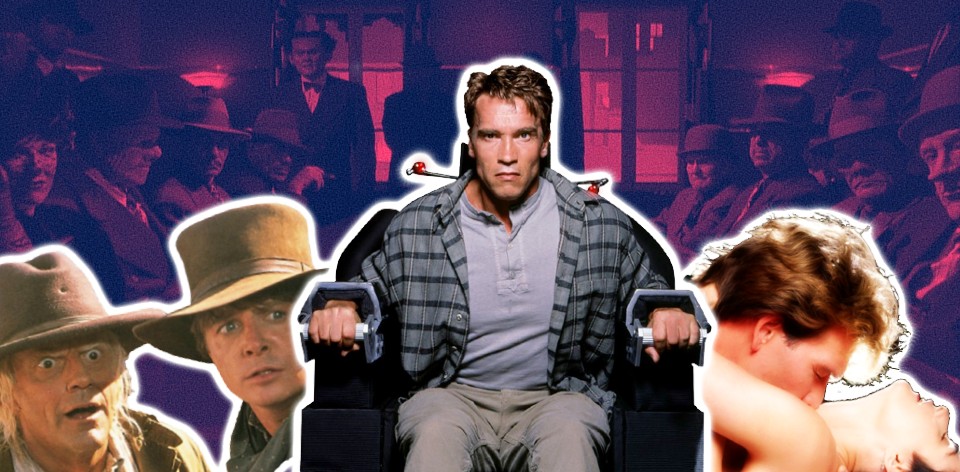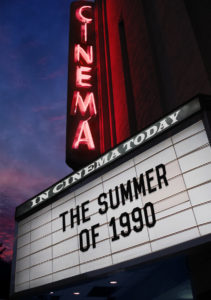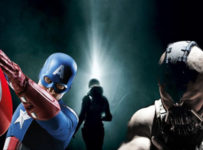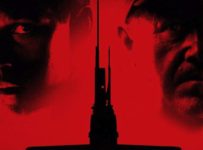The US summer box office season for 2020 may be postponed, but thanks to a cinematic time machine we can visit some classic cinema seasons. Let’s head back 30 years!
When we last took a trip through time, it was to the Summer of 1980 and the biggest films were the likes of The Shining, The Empire Strikes Back and Airplane! A decade later, sequels dominated the landscape – but also gave me some of my fondest memories.
Growing up in Australia, the US summer season is actually our winter. The colder conditions and June rains make it the perfect time to go indoors and watch the biggest imports from the US. In those days, we didn’t get things as fast as we do now – well, most of the time – but nor did we have the Internet giving us perpetual FOMO.
Yet as an 11-year-old boy, I was really starting to find my fan feet. I would collect magazines, newspaper articles, posters and anything I could find about coming releases. Sometimes I’d read a MAD Magazine parody before the film had reached our shores.

By the time the US summer season had rolled around, the ’90s had already gotten off to a pretty solid start. Hunt for the Red October, Pretty Woman, Joe Versus the Volcano (which I thought was genius at age 11), and no less than two films about the Lambada (the forbidden dance!) hit cinemas. Turtle Mania was in full swing as the first Teenage Mutant Ninja Turtles hit the US in March. Meanwhile, Peter Greenaway was baffling art house crowds with The Cook, the Thief, His Wife & Her Lover.
May
May was an odd mix of films to kick of the US summer season, starting with horror anthology Tales from the Darkside: the Movie, one that included scripts from George A. Romero and Michael McDowell.

John Badham’s BIRD ON A WIRE was arguably one of the more memorable action films of the year, starring Goldie Hawn and Mel Gibson at the height of his acting career, just off the back of a pair of Lethal Weapon movies.
From the Asia in Focus section of the month was THE SWORDSMAN (笑傲江湖), a Hong Kong wuxia film with a directorial team let by Tsui Hark, and also included King Hu, Ching Siu-tung, Raymond Lee, Ann Hui and Andre Kam. The massive
Yet the main event, for me at least, was BACK TO THE FUTURE PART III. I’d patiently waited with my grandfather since the cliffhanger ending of Part 2, which actually had a trailer for the third film tacked on pre-credits. IMDB tells me Australia got this a full month behind the US, but six months ahead of Greece and Italy! So there! I collected every conceivable scrap of news from newspapers and magazines. (It was like an analogue Pinterest, kids).

While it is best not to think too hard about why Marty’s great great great grandmother Maggie McFly looks identical to his mother (who is also married to a man that looks like him), BTTF3 is built on repetition and reversal of the first film. Take the final train sequence as an example: it’s a near mirror of the climatic Clock Tower sequence, and both are textbook entries in action film editing.
The film cops a lot of shit these days, and I’m not entirely sure why. Maybe it’s the most atypical BTTF of the trilogy. Yet compared with the darkness of the second film, 11-year-old me (and 41-year-old me) was influenced and defined so many of the things that I’ve loved over the last 30 years: time travel, westerns, and pie plates.
June
For a month that opened with Frankenhooker, June 1990 might have been one of the most memorable months in box office history.
Paul Verhoeven’s TOTAL RECALL came out like a bolt of blue. While I probably didn’t see this in cinemas, the very adult sci-fi (based on Philip K. Dick’s story We Can Remember It For You Wholesale) has become iconic. I would get my ass to Mars years later (repeatedly) and develop a fondness for Verhoeven’s work that peaked five years later with Showgirls. That’s a story for another column.
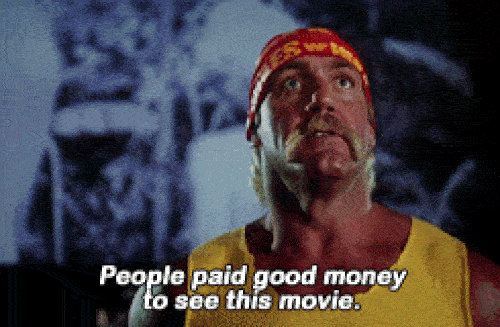
I distinctly remember two things about GREMLINS 2: THE NEW BATCH. I saw it in the cinema, and played an incredibly buggy game on my Amiga 500. What I recall most are those moments where the film broke the fourth wall, utilising no less a talent than Hulk Hogan to abuse the titular nasties in the projection booth when the film comes to a halt. Take that, Deadpool.
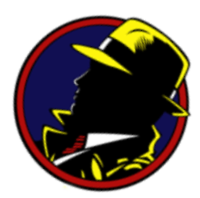
DICK TRACY (Dir: Warren Beatty) is one of those films that flopped in my mind, perhaps because of the mixed reviews and historic neglect. While it didn’t do Batman (1989) money, which no comic book film managed in 1990, it did make the US Top 10 and earned 3 Academy Awards! So, this is one of the earlier comic book success stories that never got into sequel territory despite Beatty’s wishes for it.

Paul Verhoeven didn’t return for the sequel to his 1987 satire Robocop, but Irvin Kershner had already proven himself a capable director of sequels and remakes with The Empire Strikes Back and Never Say Never Again. While it had a mixed response with critics, ROBOCOP 2 had a strong opening weekend and even predicted Detroit filing for bankruptcy in 2013. You can buy that for a dollar.
Remember when Tom Cruise and Nicole Kidman were a thing? DAYS OF THUNDER was the first of three films, along with Far and Away and Eyes Wide Shut, where they collaborated on screen. Cruise also reunited with Tony Scott to recapture some of that Top Gun magic. Arguably the height of what critic Roger Ebert called the “Tom Cruise Picture,” I was more likely to have played the game than seen the film back in those days.
Now, let’s quietly draw a veil over Ghost Dad, a film in which a dead Bill Cosby inappropriately hangs around and creeps on his children.
July
The calendar may have read July 4th, but for John McClane it was Christmastime again. Renny Harlin’s DIE HARD 2 took its inspiration from Walter Wager’s 1987 novel 58 Minutes, but replayed many of the tropes of the first film. Shifting the location to an airport, it almost doubled the box office takings of the first film and landed solidly in the Top 10 highest grossing films of the year.
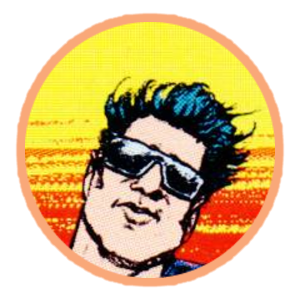
Rather unusually, Harlin had another film out only a week later. THE ADVENTURES OF FORD FAIRLANE used the crude humour of Andrew Dice Clay and earned a Golden Raspberry Award for Worst Picture, tying with the cinematic excellence of Bo Derek’s Ghosts Can’t Do It (which featured a cameo from some fellow named Donald Trump!) Perhaps the most lasting thing from this film is Billy Idol’s “Cradle of Love.”
Arguably the biggest film of the month, and also for the year, was the Patrick Swayze and Demi Moore vehicle, GHOST. Endlessly parodied over the last 30 years – from The Naked Gun 2 1⁄2: The Smell of Fear (1991) to Family Guy – it not only put The Righteous Brothers back in the charts with ‘Unchained Melody,’ but it caused thousands of people around the world to sign up for pottery classes. Whoopi!
Other films that populated the month included Quick Change, which still stands as Bill Murray’s only directorial credit, Frank Marshall’s black comedy Arachnophobia, and the Harrison Ford starring legal drama Presumed Innocent.
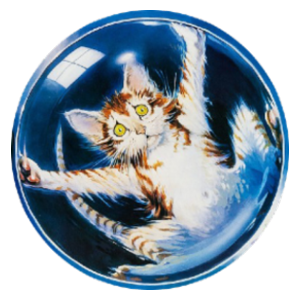
Yet, as much as it shames me to admit it these days, one of the more memorable films from this era of my childhood was Dennis Dugan’s PROBLEM CHILD. C’mon: what kid wouldn’t be delighted by the hijinks of a child running rampant? Fun fact: future Kramer actor Michael Richards took the role of the villain after Christopher Lloyd turned it down, continuing a trend from his role in UHF (1989), one that Lloyd also left vacant for him. Now I’m picturing Lloyd bursting through Seinfeld’s door screaming ‘You’ve gotta come back with me!’
Beyond summer
Outside of the blockbuster season, 1990 was a staggeringly good year for cinema. While I was enjoying the fun of Young Guns II and the accompanying Jon Bon Jovi album on high rotation, August released David Lynch’s Wild At Heart, Nicholas Roeg’s The Witches and Akira Kurosawa’s Dreams.
Goodfellas, Postcards from the Edge, King of New York, and Texasville followed fast in September, with the Coen Brothers’ Miller’s Crossing coming out in October. The following month was all about sequels, Prince’s Graffiti Bridge, Child’s Play 2, Rocky V, Predator 2, The Rescuers Down Under, and Three Men and a Little Lady. Yet a handful of films stood out between them, not least of which were Dances with Wolves, Home Alone (the second highest grossing film of the year), Misery and the two-part mini-series of Stephen King’s It.
The year came to a memorable close with the likes of Edward Scissorhands, Awakenings, Franco Zeffirelli’s Hamlet, Brian De Palma’s Bonfire of the Vanities, Kindergarten Cop and The Godfather Part III. A dub of Hayao Miyazaki’s Kiki’s Delivery Service (which was released in Japan in July) was also made available to the English-speaking public, although it’s vastly different from the Kirsten Dunst dubbed version almost a decade later.
30 years later
Looking back on 1990, it’s interesting to see how much tastes have changed and stayed the same in the last three decades. Sequels still dominate the box office, although now it’s less about comedy franchises than comic book ones.
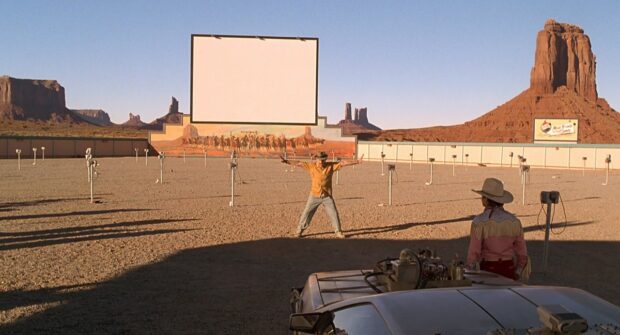
While I have some strong movie memories prior to this, it’s arguably one of the first seasons I actively anticipated as a young film geek in training. Say what you want about sequels and franchises, but I lived and breathed Back to the Future in those days, and thanks to emerging video gaming, VHS and tie-in novels, I was finally at a point where that love of film extended beyond the cinema.
If you told that 11-year-old boy that he would not only be regularly writing about film but getting special media access one day, he’d immediately go about inventing a time machine to get there faster. After all, I’d spent the better part of the previous year researching the Holy Grail because of Indiana Jones. I have since stopped looking.
Next stop: the Summer of 2000 which included Gladiator, X-Men, Mission: Impossible 2, Disney’s Dinosaur and…Battlefield Earth! Join us back here if you dare.

